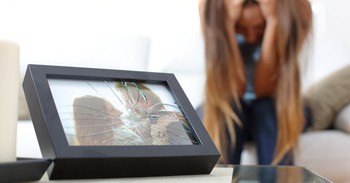
No Popes! Down with the Catholic Relief Bill." Shouting and shaking their fists, 50,000 people, all wearing blue badges on their hats and carrying blue flags, marched toward the House of Commons in London. It happened on this day, June 2, 1780.
For two hundred years, since the time of Queen Elizabeth I, Catholics in Protestant England had lived under restrictions. But after the Revolutionary War broke out in America, King George III's ministers thought it would be wise to pass a law freeing Catholics. Otherwise they feared that Ireland might grab the chance to revolt while Britain was busy fighting in America. Some officials thought it was a shame, too, that Catholics had fewer rights than England's other citizens.
But Lord George Gordon, a retired navy Lieutenant, hated the Roman Church. He collected thousands of signatures on a petition to overturn the Catholic Relief Act that passed in 1778. With 50,000 people at his back, he marched to Parliament to present the petition.
The mob turned ugly. Smashing windows and breaking down doors, they looted Catholic homes and set them on fire. For over a week the rampage continued. Unpopular Protestant leaders suffered, too.
Writing a letter to a friend, Ignatius Sancho said, "Gracious God! what's the matter now? I was obliged to leave off--the shouts of the mob--the horrid clashing of swords--and the clutter of a multitude in swiftest motion--drew me to the door..."
He had already described at least a hundred thousand "poor, miserable, ragged rabble, from twelve to sixty years of age, with blue cockades in their hats, besides half as many women and children, all parading the streets, the bridge, the park, ready for any and every mischief." These rioters robbed anyone unfortunate enough to fall in their path.
The rioters broke into Catholic chapels and attacked London prisons: King's Bench Fleet and Newgate. Newgate, in fact, was set on fire, and all its prisoners freed. When the mob attacked the Bank of England, John Wilkes ordered his men to shoot. Several rioters fell dead. More people died in a brewery that caught fire. On the evening of June 6, Prime Minister Lord North barely escaped the mob by forcing his coach horses into a gallop. He lost his hat, which the crowd tore up. The pieces were passed around like trophies.
On June 7th, the government finally called the army in. By then, fires burned everywhere, and there was no way to fight them, because the mobs had destroyed the fire-fighters' equipment. Soldiers and horsemen began shooting into the crowds or charging into them with swords and bayonets. Close to 500 people were killed or wounded before the riot was stopped. Later, 52 of the ringleaders were convicted and about 25 executed for their part in the shameful episode. The act stood.
Bibliography:
- Castro, J Paul de. The Gordon Riots. Oxford, 1926.
- Pollen, J. H. "Gordon Riots." The Catholic Encyclopedia. New York: Robert Appleton, 1914.
- Various internet and encyclopedia articles.
Last updated May, 2007.


